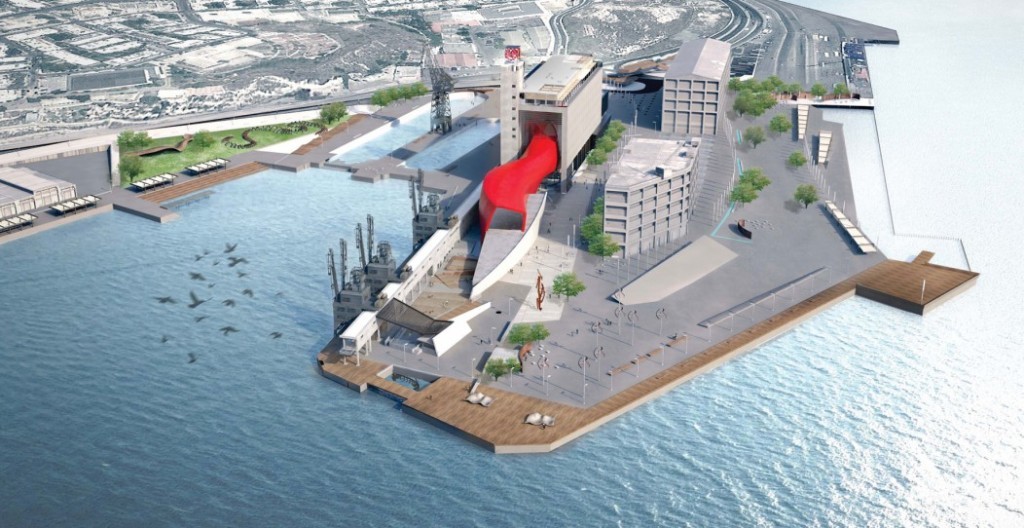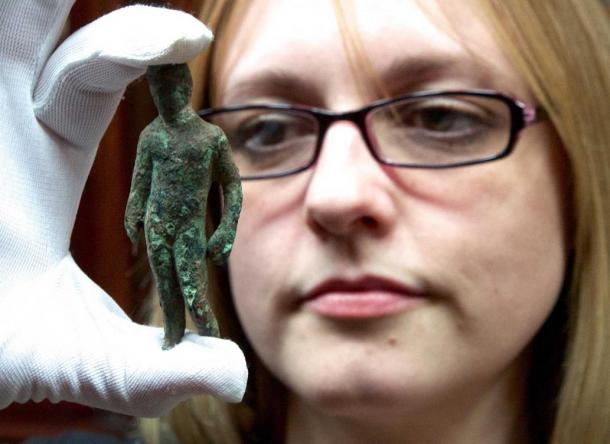A news roundup today as I am incredibly pressed for time. Lots happening in the world, after all!
Green light to archeologists exploring the Antikythera Shipwreck
 Protothema reports that the Greek Central Archeological Council (KAS) gave the green light for the Antikythera Shipwreck in southern Greece and will continue its investigation into the area for the next five years. The test excavations are to focus on areas where numerous metal objects and pottery has been discovered and where archeologists have discovered evidence of one or two more shipwrecks.
Protothema reports that the Greek Central Archeological Council (KAS) gave the green light for the Antikythera Shipwreck in southern Greece and will continue its investigation into the area for the next five years. The test excavations are to focus on areas where numerous metal objects and pottery has been discovered and where archeologists have discovered evidence of one or two more shipwrecks.
The last expedition launched in 2012 was a joint effort between the Hellenic Ephorate of Underwater Antiquities and the American Woods Hole Oceanographic Institute (WHOI). During their endeavours, archeologists discovered a segment of an anchor and a lead joint from a Roman anchor among other findings. In 2013, information of a second Roman shipwreck close to the first one was discovered.
Last year, archeologists used new robotic diving equipment known as the Exosuit and captured a digitized 3D location of the wreck and pulled out sections of a bed decoration and bronze spear. The excavation is led by Dr. Angeliki Simosi and WHOI’s marine archeologist Brendan Foley.
Two thousand year old Mercury figurine found in Yorkshire
Ancient Origins reports that a metal detector enthusiast has discovered a 2000-year old figurine depicting the Roman god Mercury in a field near Selby, Yorkshire, UK. The Mercury figurine found in Yorkshire is made of copper alloy. Although it depicts the god wearing a cap, this garment has lost its famous wings. It is just one of many similar figures that have been found across the UK, according to the Yorkshire Post.
The York Museums Trust regularly receives artifacts found by the general public. According to Rebecca Griffiths, the Finds Liaison Officer for the Portable Antiquities Scheme at the York Museums Trust:
Ms Griffiths added that every year, she and her team of volunteers add more than 2,000 items to the museum’s collection, ranging from Roman coins to medieval buckles, to stone tools and post-medieval toys.
Vandalism at Athenian Long Walls
Football supporters defaced the ancient Athenian Long Walls with graffiti. The walls, originally erected in the 5th century BC, were destroyed by Sparta in 403 BC and were rebuilt with the help of the Persians during the Corinthian War.
Vandals also defaced the prison cell in the Acropolis where philosopher Socrates is believed to have been held prior to being made to kill himself in 399 BC by drinking hemlock for corrupting the youth of Athens.
Staff of the Greek Ministry of Culture removed the graffiti. The incident comes as the Greek state granted 24-hour access to major archeological sites. Staff are worried that the new hours coupled with the short-staffed personnel will lead to greater vandalism.
Designs for cutting-edge museum for underwater artifacts unveiled
 A presentation of designs for a new state-of-the-art museum for underwater antiquities at the port of Piraeus took place this week at the site where the new museum will be transformed from a current industrial site, Protothema reports. The presentation took place aboard a Liberty-class freighter now also serving as a floating museum.
A presentation of designs for a new state-of-the-art museum for underwater antiquities at the port of Piraeus took place this week at the site where the new museum will be transformed from a current industrial site, Protothema reports. The presentation took place aboard a Liberty-class freighter now also serving as a floating museum.
The current site served as a grain storage facility complete with silo, constructed in 1936, itself an example of industrial design. The new facility is expected to house nearly 2,000 antiquities and artifacts found at the bottom of seas around Greece. Most of the exhibits are currently in storage, the product of nearly 40 years of archaeological research. Total exhibition space will be 6,500 square meters within the 13,500 sq. meter building.
Another highly-anticipated facet of the new museum is the opportunity to finally salvage and preserve several ancient, medieval and more contemporary shipwrecks still languishing at the bottom of the sea.
Green light to archeologists exploring the Antikythera Shipwreck
 Protothema reports that the Greek Central Archeological Council (KAS) gave the green light for the Antikythera Shipwreck in southern Greece and will continue its investigation into the area for the next five years. The test excavations are to focus on areas where numerous metal objects and pottery has been discovered and where archeologists have discovered evidence of one or two more shipwrecks.
Protothema reports that the Greek Central Archeological Council (KAS) gave the green light for the Antikythera Shipwreck in southern Greece and will continue its investigation into the area for the next five years. The test excavations are to focus on areas where numerous metal objects and pottery has been discovered and where archeologists have discovered evidence of one or two more shipwrecks.The last expedition launched in 2012 was a joint effort between the Hellenic Ephorate of Underwater Antiquities and the American Woods Hole Oceanographic Institute (WHOI). During their endeavours, archeologists discovered a segment of an anchor and a lead joint from a Roman anchor among other findings. In 2013, information of a second Roman shipwreck close to the first one was discovered.
Last year, archeologists used new robotic diving equipment known as the Exosuit and captured a digitized 3D location of the wreck and pulled out sections of a bed decoration and bronze spear. The excavation is led by Dr. Angeliki Simosi and WHOI’s marine archeologist Brendan Foley.
Two thousand year old Mercury figurine found in Yorkshire
Ancient Origins reports that a metal detector enthusiast has discovered a 2000-year old figurine depicting the Roman god Mercury in a field near Selby, Yorkshire, UK. The Mercury figurine found in Yorkshire is made of copper alloy. Although it depicts the god wearing a cap, this garment has lost its famous wings. It is just one of many similar figures that have been found across the UK, according to the Yorkshire Post.
The York Museums Trust regularly receives artifacts found by the general public. According to Rebecca Griffiths, the Finds Liaison Officer for the Portable Antiquities Scheme at the York Museums Trust:
“Every year thousands of archaeological objects are discovered. While the majority of these come from metal-detector users, we also see many finds from people field-walking, gardening, renovating houses and even those out walking particularly inquisitive dogs.”
Ms Griffiths added that every year, she and her team of volunteers add more than 2,000 items to the museum’s collection, ranging from Roman coins to medieval buckles, to stone tools and post-medieval toys.
Vandalism at Athenian Long Walls
Football supporters defaced the ancient Athenian Long Walls with graffiti. The walls, originally erected in the 5th century BC, were destroyed by Sparta in 403 BC and were rebuilt with the help of the Persians during the Corinthian War.
Vandals also defaced the prison cell in the Acropolis where philosopher Socrates is believed to have been held prior to being made to kill himself in 399 BC by drinking hemlock for corrupting the youth of Athens.
Staff of the Greek Ministry of Culture removed the graffiti. The incident comes as the Greek state granted 24-hour access to major archeological sites. Staff are worried that the new hours coupled with the short-staffed personnel will lead to greater vandalism.
Designs for cutting-edge museum for underwater artifacts unveiled
 A presentation of designs for a new state-of-the-art museum for underwater antiquities at the port of Piraeus took place this week at the site where the new museum will be transformed from a current industrial site, Protothema reports. The presentation took place aboard a Liberty-class freighter now also serving as a floating museum.
A presentation of designs for a new state-of-the-art museum for underwater antiquities at the port of Piraeus took place this week at the site where the new museum will be transformed from a current industrial site, Protothema reports. The presentation took place aboard a Liberty-class freighter now also serving as a floating museum. The current site served as a grain storage facility complete with silo, constructed in 1936, itself an example of industrial design. The new facility is expected to house nearly 2,000 antiquities and artifacts found at the bottom of seas around Greece. Most of the exhibits are currently in storage, the product of nearly 40 years of archaeological research. Total exhibition space will be 6,500 square meters within the 13,500 sq. meter building.
Another highly-anticipated facet of the new museum is the opportunity to finally salvage and preserve several ancient, medieval and more contemporary shipwrecks still languishing at the bottom of the sea.



No comments:
Post a Comment